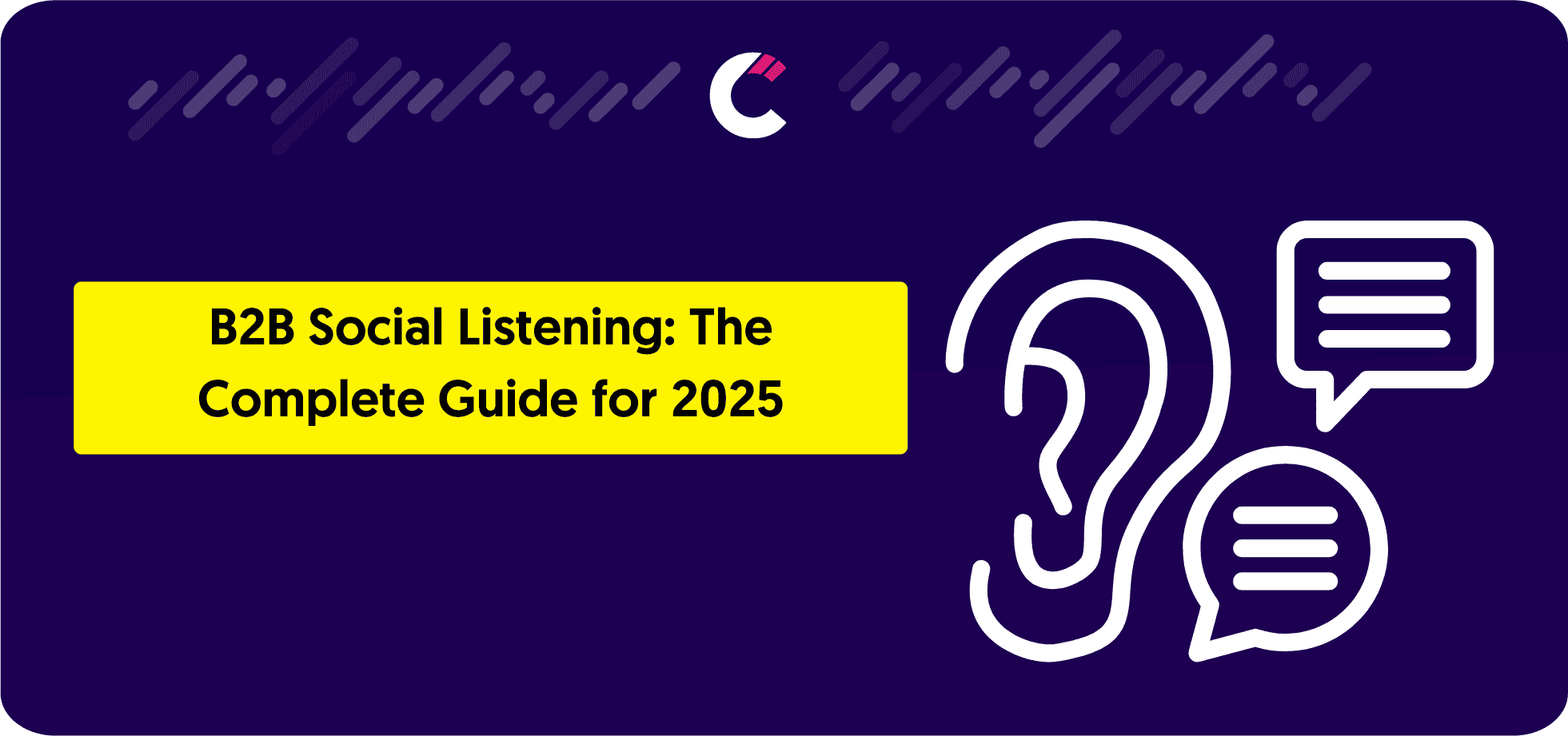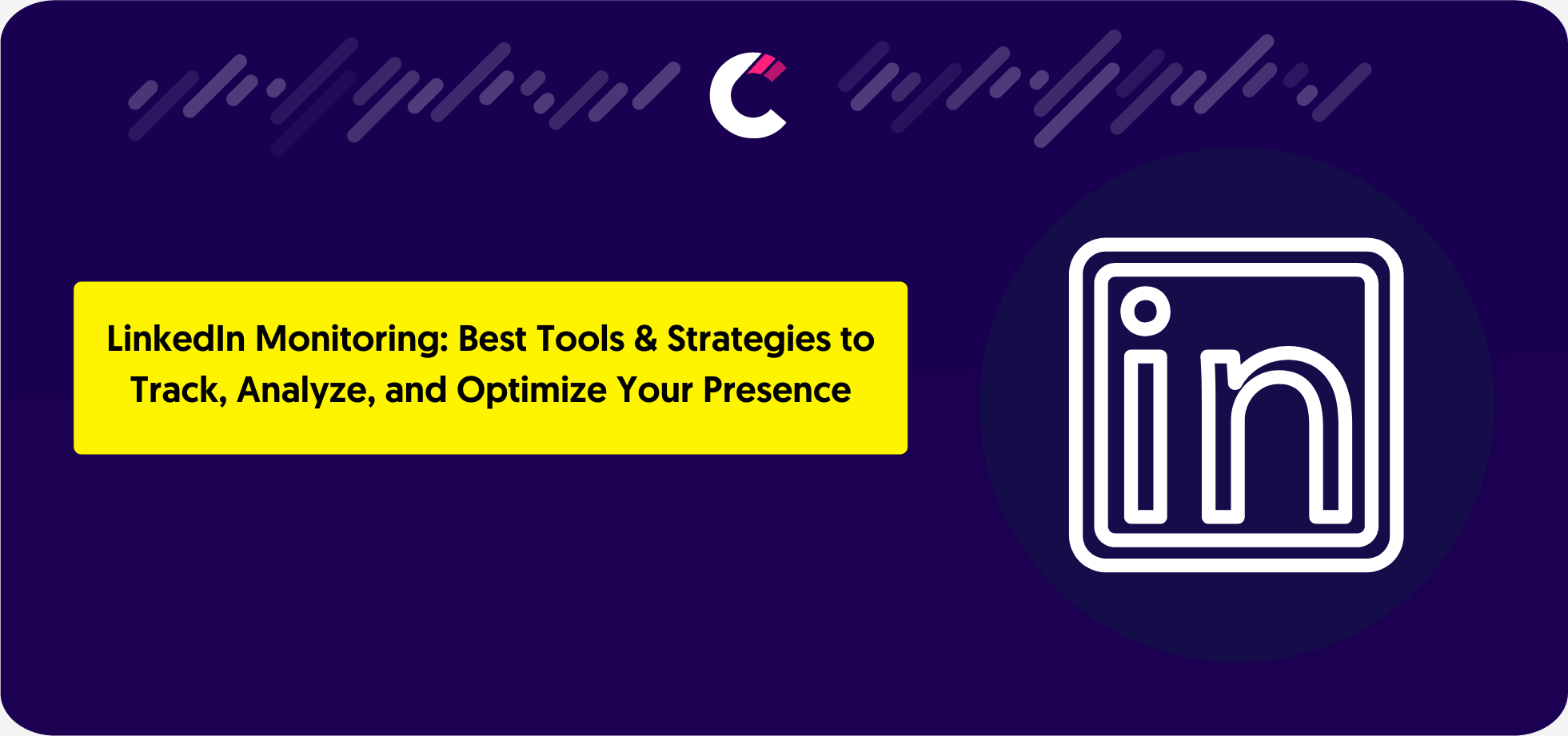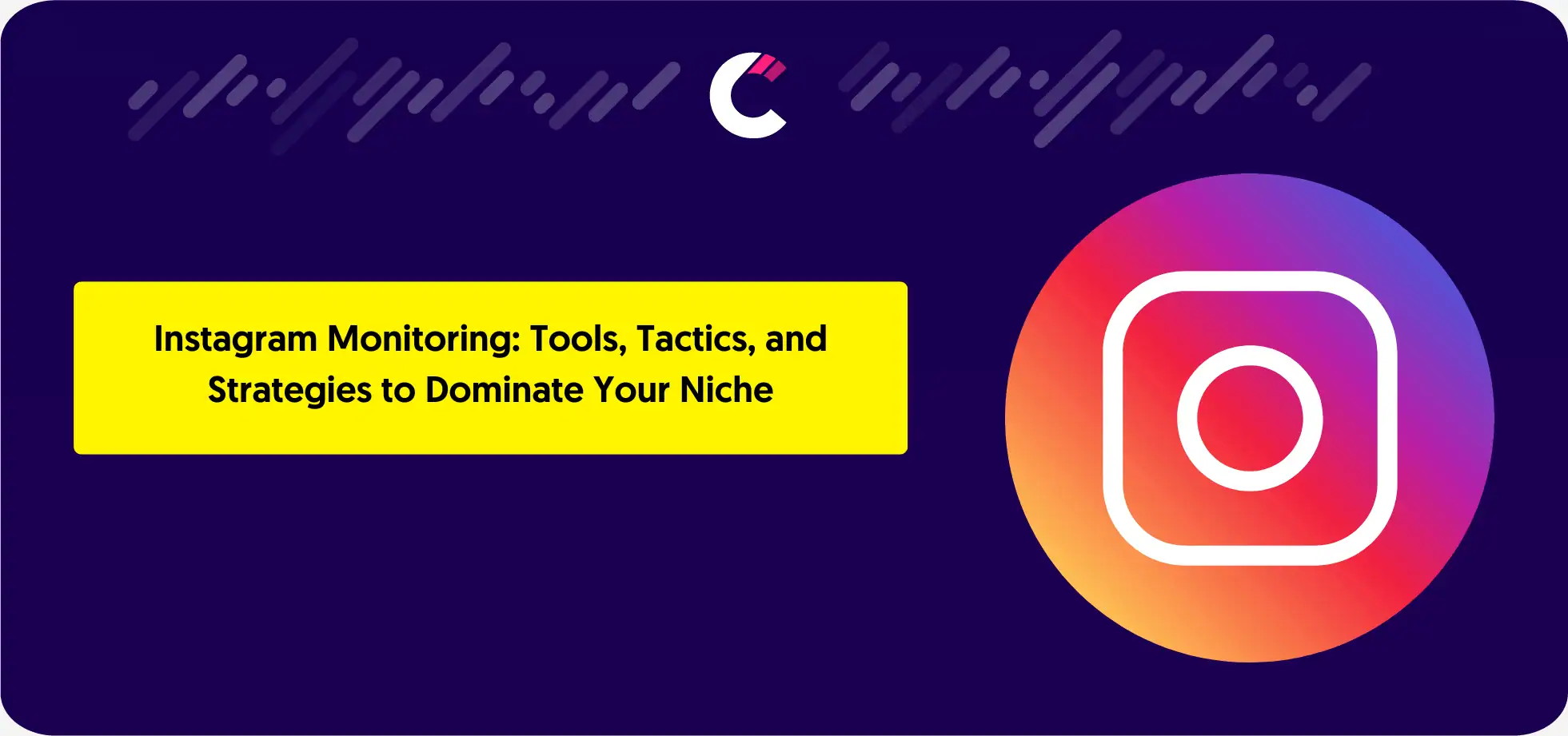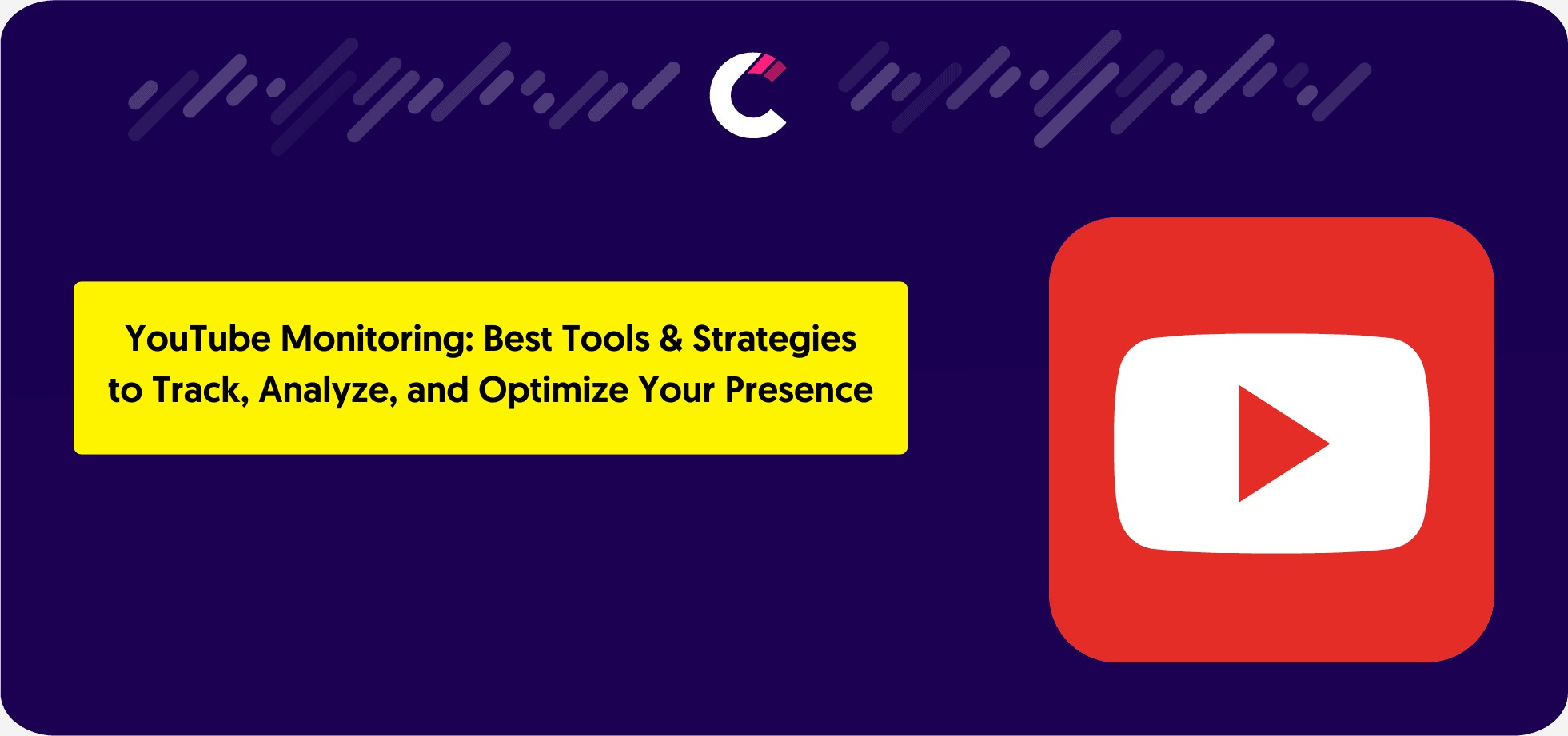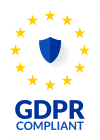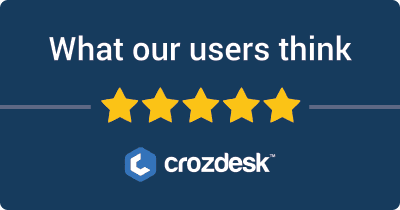What is B2B Social Listening?
B2B social listening is the process of tracking, analyzing, and acting on online conversations about a business, industry trends, competitors, and customer sentiment. Unlike B2C social listening, which focuses heavily on real-time engagement and consumer emotions, B2B listening is more about extracting strategic insights. The goal is to understand how decision-makers, industry experts, and competitors communicate and what signals they provide about market shifts.
B2B companies use social listening to:
- Identify trends shaping their industry
- Track competitor marketing and branding strategies
- Discover potential leads through relevant discussions
- Assess how their brand is perceived in the market
- Gather feedback to refine products and messaging
Because B2B transactions involve longer sales cycles and more stakeholders, the insights gained from social listening need to be layered with context. A one-time mention may not mean much, but repeated patterns in discussions can indicate major industry shifts or untapped opportunities.
How Does B2B Social Listening Work?
At its core, B2B social listening involves tracking online conversations and analyzing them for patterns, sentiment, and actionable insights. It follows a structured process:
- Identifying Key Channels – While B2C brands focus on Instagram and TikTok, B2B conversations mainly happen on LinkedIn, X (formerly Twitter), Reddit, and niche industry forums.
- Setting Up Tracking Mechanisms – Businesses use social listening tools to monitor keywords, brand mentions, competitor activity, and industry discussions.
- Analyzing Conversations – AI-powered tools categorize data into trends, sentiment analysis, and engagement patterns.
- Extracting Actionable Insights – The data is used to refine marketing strategies, sales outreach, product development, and customer engagement.
Real-Time vs. Long-Term Social Listening
- Real-time social listening helps businesses respond to industry news, crises, or customer concerns immediately.
- Long-term social listening tracks trends over months or years, allowing businesses to refine their positioning and strategy based on evolving market demands.
B2B Social Listening vs. Social Monitoring
Many businesses confuse social listening with social monitoring, but they serve different purposes:
| Aspect | Social Monitoring | Social Listening |
|---|---|---|
| Purpose | Tracks mentions, comments, and engagement | Analyzes trends, sentiment, and competitor strategies |
| Scope | Brand-specific | Industry-wide |
| Timeframe | Real-time tracking | Long-term insights |
| Example | Noticing a customer complaint and responding | Identifying recurring complaints to improve product features |
Why both matter: Social monitoring ensures immediate responsiveness, while social listening shapes long-term strategies. A company that only monitors without listening may respond to complaints but fail to recognize a growing dissatisfaction trend in its industry.
B2B Social Listening Use Cases
B2B social listening goes beyond tracking mentions—it provides valuable insights that inform strategic decisions. Here are the most impactful ways businesses use social listening to improve their operations.
1. Gaining Market Intelligence & Competitive Insights
Social listening helps companies stay ahead by tracking industry conversations, identifying trends, and analyzing competitor strategies. Businesses can understand what customers expect, what competitors are promoting, and how the market is shifting.
How It’s Used:
- Identifying recurring themes in industry discussions to anticipate future trends
- Monitoring competitor messaging and engagement strategies
- Tracking emerging challenges that customers frequently mention
2. Generating Leads & Sales Opportunities
B2B buyers often discuss their pain points and seek recommendations on social media and forums. Social listening allows brands to engage potential leads before they actively search for a solution.
How It’s Used:
- Identifying discussions around specific pain points and offering helpful insights
- Engaging in conversations where decision-makers express frustration with competitors
- Discovering potential clients based on engagement patterns and sentiment shifts
3. Handling Crisis Management Proactively
In the B2B world, reputation can be difficult to rebuild once trust is lost. Social listening helps companies detect early signs of negative sentiment and respond before issues escalate.
How It’s Used:
- Monitoring discussions around complaints or dissatisfaction
- Identifying negative sentiment trends across social media and forums
- Engaging directly with customers to provide solutions before the issue spreads
4. Identifying Brand Advocates & Influencers
Industry leaders, analysts, and executives often shape conversations in the B2B space. Social listening helps brands identify and build relationships with these key voices.
How It’s Used:
- Tracking industry influencers who mention relevant topics
- Engaging with professionals who frequently discuss related services
- Identifying existing customers who actively promote the brand organically
5. Monitoring Competitors & Industry Trends
Tracking competitors’ marketing strategies and customer feedback helps businesses refine their positioning. Social listening provides a real-time view of what works and what doesn’t.
How It’s Used:
- Identifying which competitor campaigns generate engagement
- Understanding how audiences react to new product launches or updates
- Learning from competitors’ mistakes and optimizing brand messaging accordingly
6. Gathering Honest Product Feedback & Insights
B2B customers often leave detailed feedback on forums, review sites, and LinkedIn discussions. Monitoring these conversations helps businesses improve their offerings based on real-world input.
How It’s Used:
- Analyzing customer feedback trends to refine product features
- Identifying recurring complaints and addressing them proactively
- Using unfiltered customer opinions to enhance marketing positioning
7. Measuring Brand Reputation & Industry Positioning
A strong brand reputation is a major factor in B2B decision-making. Social listening helps businesses understand how they are perceived in the market and adjust strategies accordingly.
How It’s Used:
- Tracking sentiment analysis over time to measure brand perception shifts
- Identifying common themes in discussions about the company
- Benchmarking reputation against competitors and industry leaders
Real-World B2B Social Listening Case Studies
While social listening is widely discussed in theory, real-world case studies showcase how companies have used it to drive measurable business impact.
S&P Global Commodity Insights – Optimizing Social Listening for Strategic Insights
S&P Global Commodity Insights partnered with Ten Bear Group to revamp their social listening approach. The goal was to reduce the manual workload for their marketing team while delivering more precise insights. The new system allowed them to focus on high-value strategic decisions rather than spending hours sifting through data.
StrataScratch – Using Social Listening to Improve Pricing Strategy
StrataScratch, a data science interview prep platform, monitored online discussions where users debated their pricing structure. They actively engaged in conversations to understand user sentiment and adjusted their pricing based on real feedback. This strategy resulted in increased customer satisfaction and reduced pricing-related churn.
Pepsi – Crisis Management Through Social Listening
Pepsi’s 2017 advertisement featuring Kendall Jenner received significant backlash, with many calling it tone-deaf. Using social listening, Pepsi quickly identified the wave of negative sentiment and acted fast. They pulled the ad, issued a public apology, and refined their messaging strategy. This case, documented by Sprinklr, highlights the power of social listening in crisis management.
A Leading Plumbing & Heating Brand – Tracking Customer Perceptions
A well-established plumbing and heating brand used social listening to monitor discussions across various industry forums. According to B2B International, this approach helped the company identify common customer concerns, allowing them to tailor their marketing and product development accordingly.
These examples demonstrate how social listening can drive tangible business outcomes, from strategic decision-making to crisis prevention and lead generation.
How to Build a B2B Social Listening Framework
Implementing an effective B2B social listening strategy requires a structured approach. Without a clear framework, businesses risk data overload, irrelevant insights, or missed opportunities. Follow these steps to build a successful social listening system.
1. Set Clear Goals
Before choosing tools or tracking platforms, businesses need to define their objectives. Common B2B social listening goals include:
- Brand Monitoring – Tracking mentions, sentiment, and conversations around your company.
- Competitive Intelligence – Understanding competitor messaging, customer sentiment, and emerging market trends.
- Lead Generation – Identifying potential customers discussing industry pain points.
- Crisis Management – Detecting negative sentiment before it escalates into a reputational issue.
Establishing a clear focus helps businesses filter out unnecessary data and extract actionable insights.
2. Identify Key Listening Channels
Unlike B2C brands that focus on Instagram and TikTok, B2B conversations happen in professional spaces. The most important platforms include:
- LinkedIn – The go-to platform for B2B networking, thought leadership, and industry discussions.
- X (Twitter) – A hub for real-time industry news, corporate announcements, and executive commentary.
- Reddit & Industry Forums – Niche discussions on platforms like Stack Exchange, r/marketing, and specialized LinkedIn Groups.
- Review Sites – Platforms like G2, Capterra, and Trustpilot offer real customer feedback on B2B products.
- News & Blogs – Industry blogs and trade publications help track larger market trends.
Focusing on the right channels ensures businesses collect relevant insights instead of wasting resources on irrelevant platforms.
3. Choose the Right Social Listening Tool
A social listening tool is essential for automating data collection and analysis. The best tool depends on business size, budget, and specific listening goals.
Key Features to Look For:
- Sentiment Analysis – Detecting positive, negative, and neutral conversations.
- Competitive Tracking – Monitoring competitor campaigns and brand mentions.
- Real-Time Alerts – Immediate notifications for critical brand discussions.
- Multi-Platform Coverage – LinkedIn, X, forums, and review sites.
- AI-Powered Insights – Automated trend detection and audience segmentation.
For businesses that focus on competitor intelligence, Competitors App offers digital marketing tracking, providing insights into content, SEO, and social media strategies.
Before committing to a tool, businesses should:
✅ Define must-have features based on their social listening goals.
✅ Test free trials or demos to assess usability and reporting quality.
✅ Ensure integration with existing CRM and analytics platforms.
4. Analyze Data and Extract Insights
Once data is collected, the next step is transforming it into meaningful insights. Common analysis techniques include:
- Sentiment Analysis – Identifying whether conversations are positive, negative, or neutral.
- Trend Tracking – Recognizing recurring industry topics and shifts.
- Audience Segmentation – Categorizing discussions by job titles, industries, or regions.
- Competitor Benchmarking – Comparing engagement, sentiment, and content strategies.
5. Take Action & Optimize Strategies
Social listening insights are only valuable when they lead to concrete actions. Businesses should use the findings to:
- Adjust marketing campaigns based on real-time industry discussions.
- Engage with potential leads by responding to relevant pain points.
- Refine messaging to align with customer sentiment and expectations.
- Improve products and services by addressing common feedback trends.
Best B2B Social Listening Tools in 2025
Selecting the right social listening tool is crucial for businesses looking to track industry conversations, monitor competitors, and gather actionable insights. Below are some of the best B2B social listening tools available in 2025, each offering unique capabilities tailored for different business needs.
Competitors App (for Competitor Tracking and Marketing Insights)
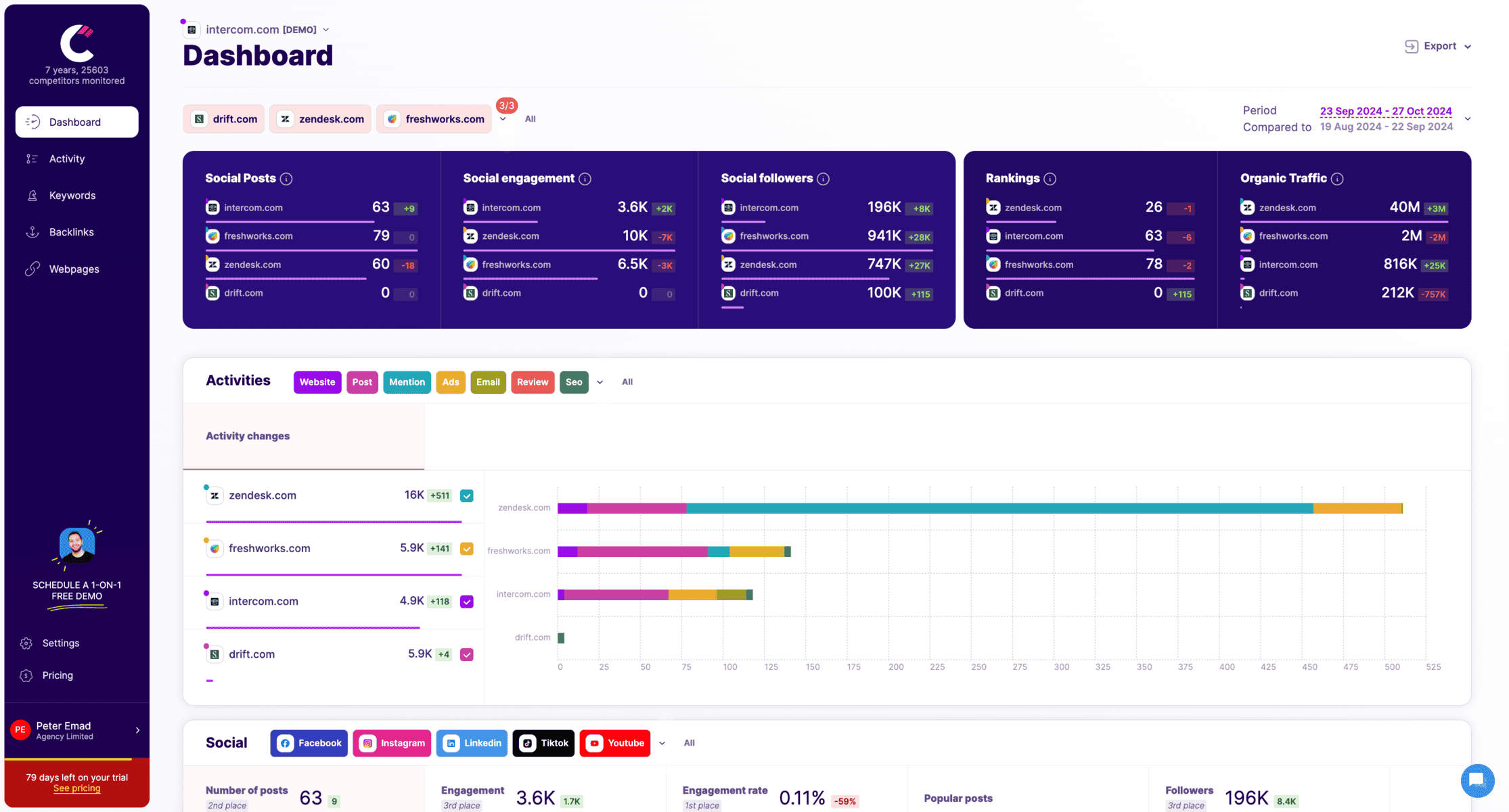
Competitors App is designed for businesses that want to track their competitors’ marketing strategies, content performance, and digital activities. It provides insights into competitors’ SEO, ads, content marketing, and social engagement, helping businesses refine their own strategies.
Key Features:
- Tracks competitor website changes, ad campaigns, and content updates.
- Monitors keyword rankings and SEO trends over time.
- Provides alerts on competitor social media activity and engagement.
- Delivers competitive intelligence reports for benchmarking.
Best For: B2B companies looking for real-time competitor tracking and digital marketing insights.
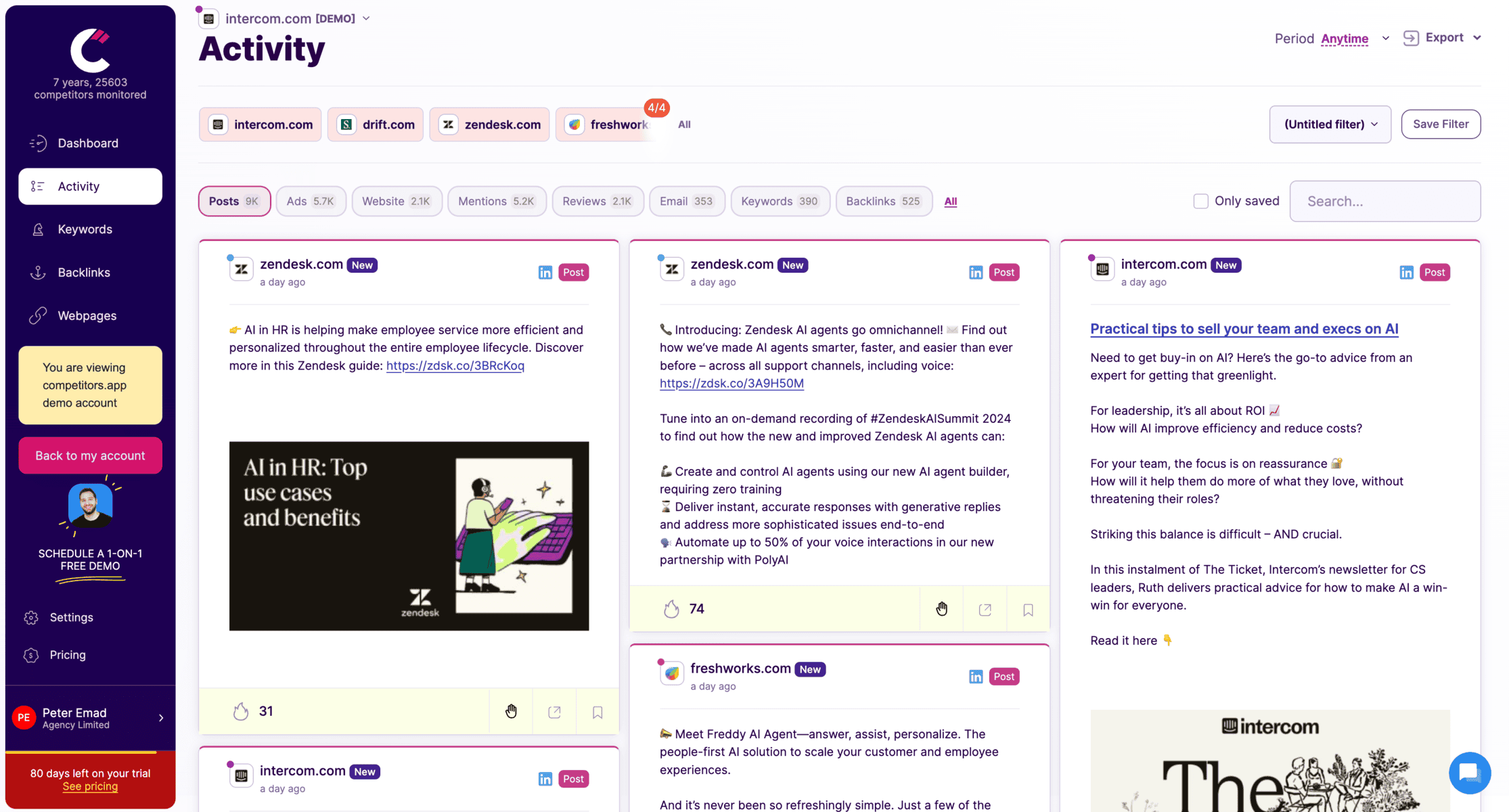
Tracks competitor social media updates across LinkedIn, Facebook, Twitter, and more.
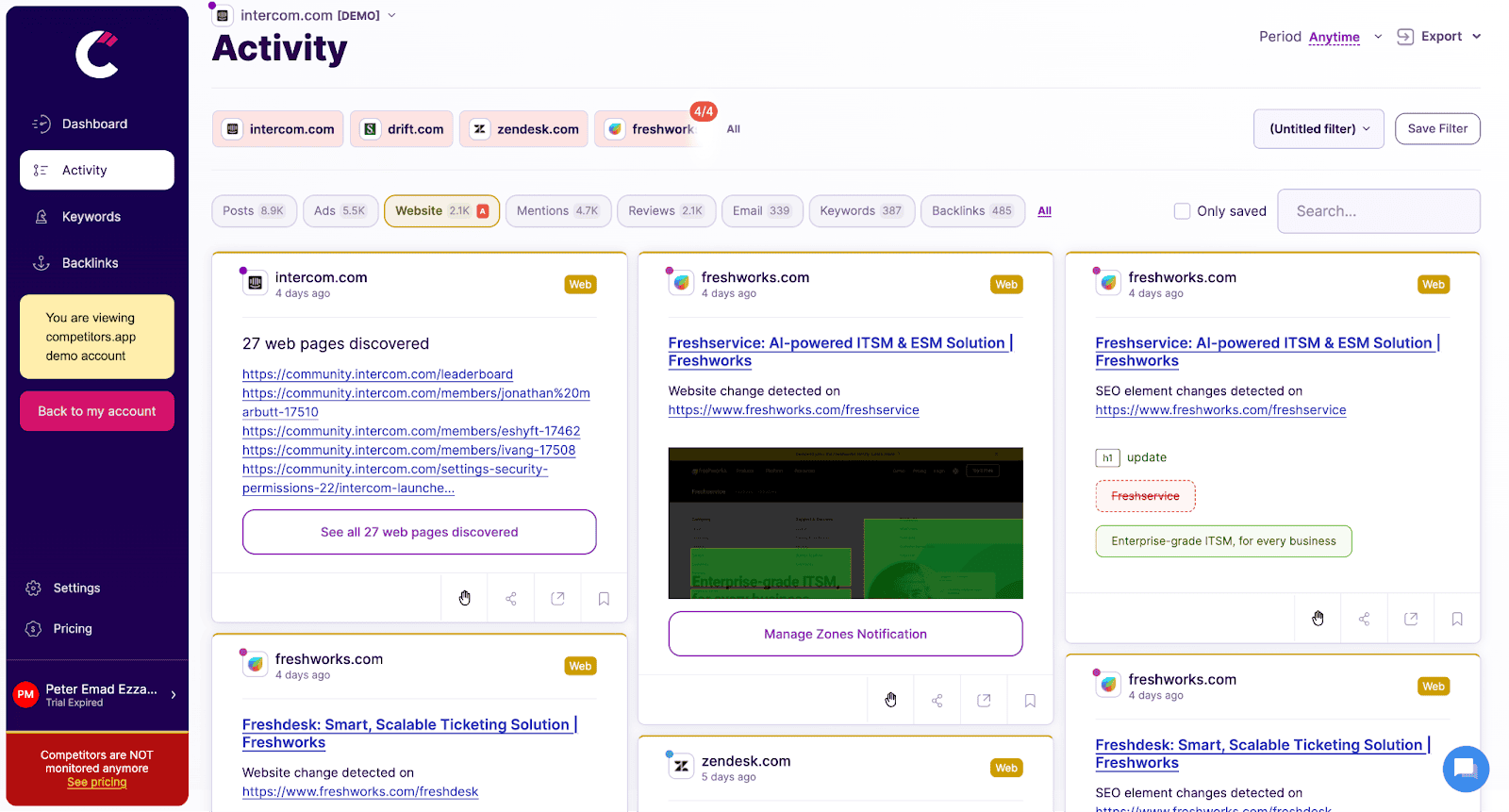
Monitors changes on competitors’ websites, such as product updates, pricing adjustments, and new messaging, providing instant alerts to help sales teams respond promptly.
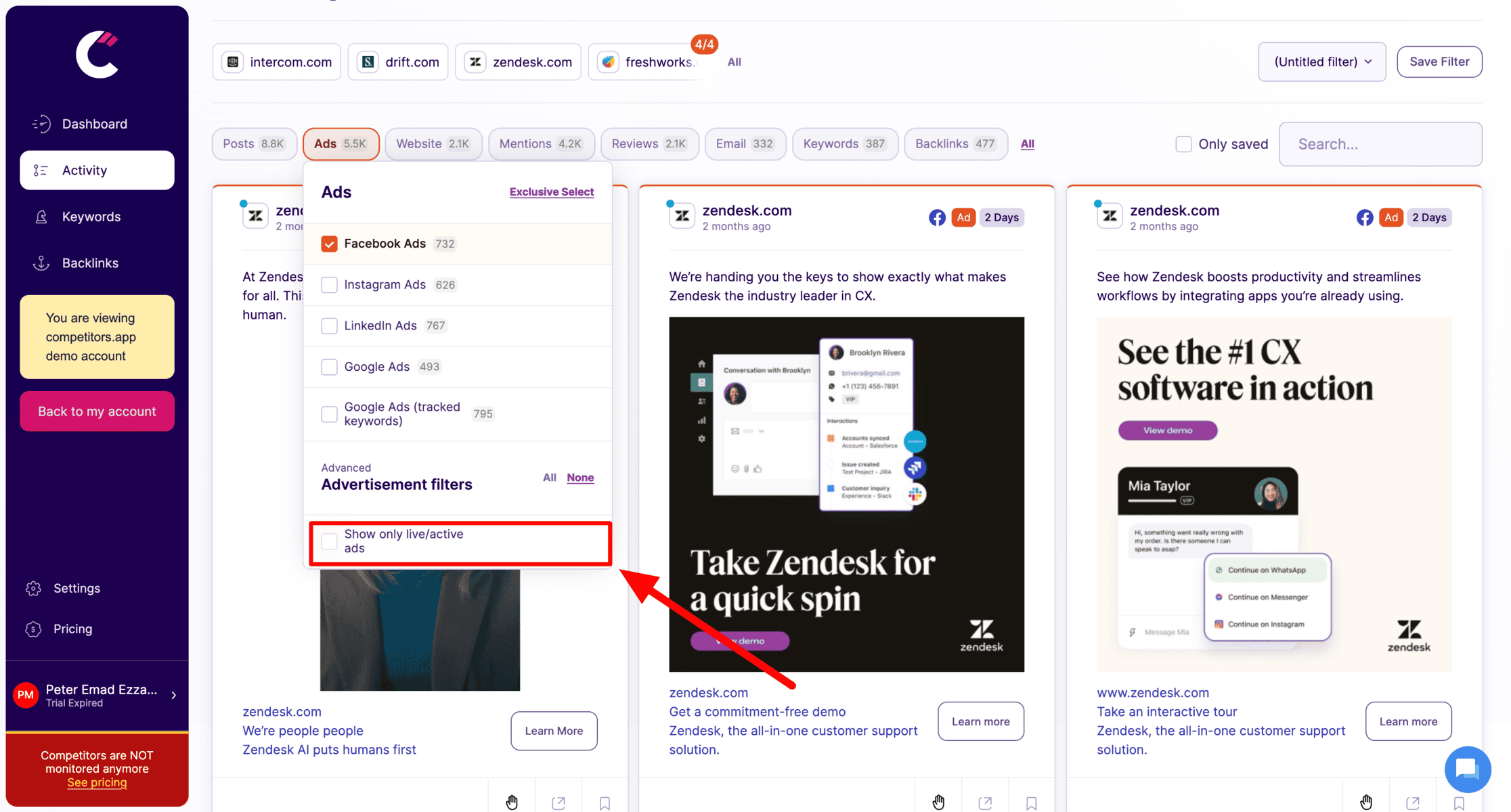
Tracks digital ad campaigns across platforms like Google Ads, Facebook, LinkedIn, and Instagram. It provides details on ad creatives, spending, and performance metrics, helping teams analyze successful ad strategies.

Analyzes competitors’ keyword strategies, organic rankings, and backlinks, allowing teams to refine their own SEO tactics and boost search visibility.
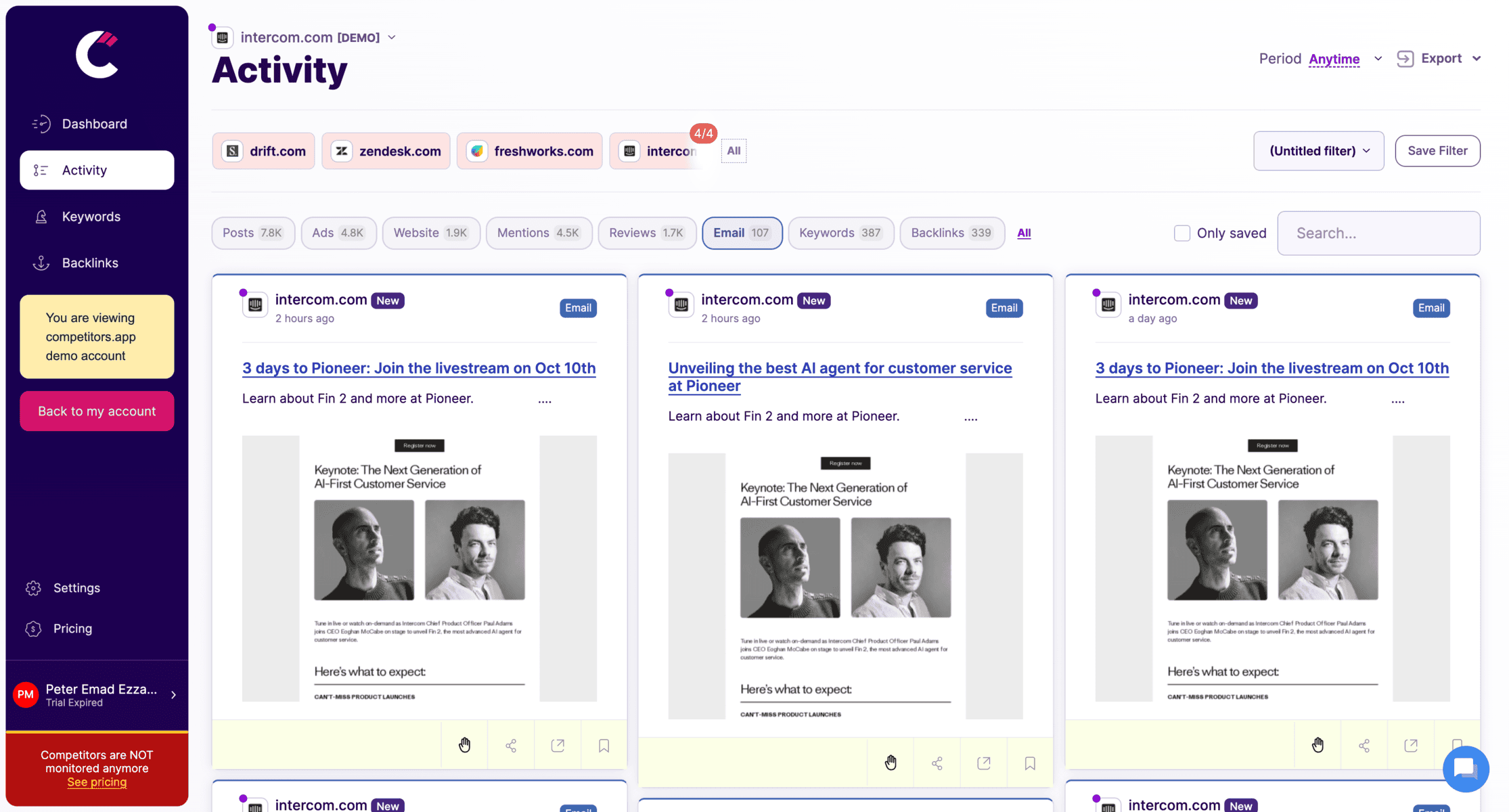
Tracks competitors’ email campaigns, including content, frequency, and engagement metrics, helping sales teams understand email tactics that drive engagement and conversions.
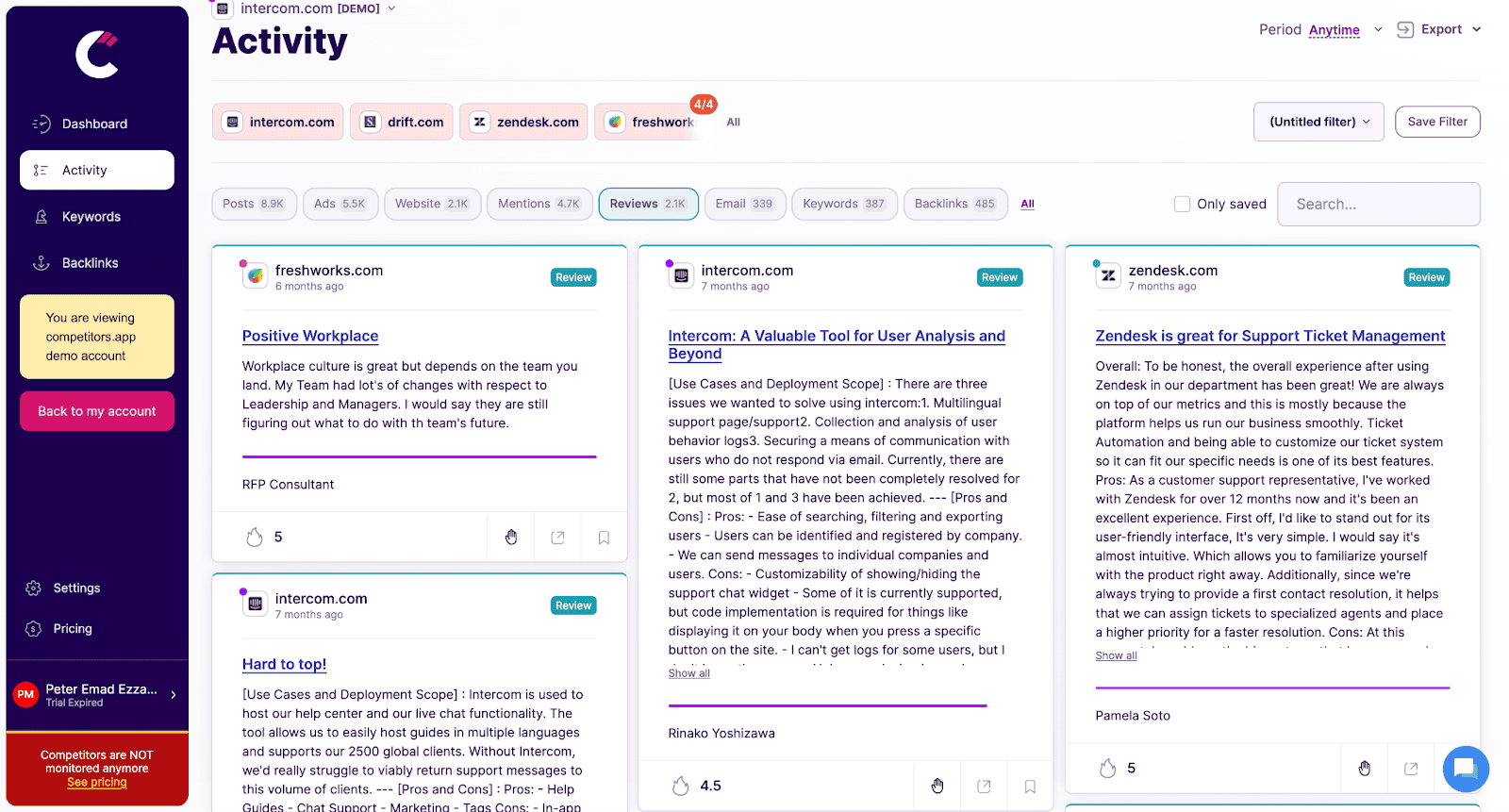
Analyzes customer reviews and ratings for competitors, providing insights into customer feedback, pain points, and product strengths, helping teams craft better sales pitches.
Brandwatch
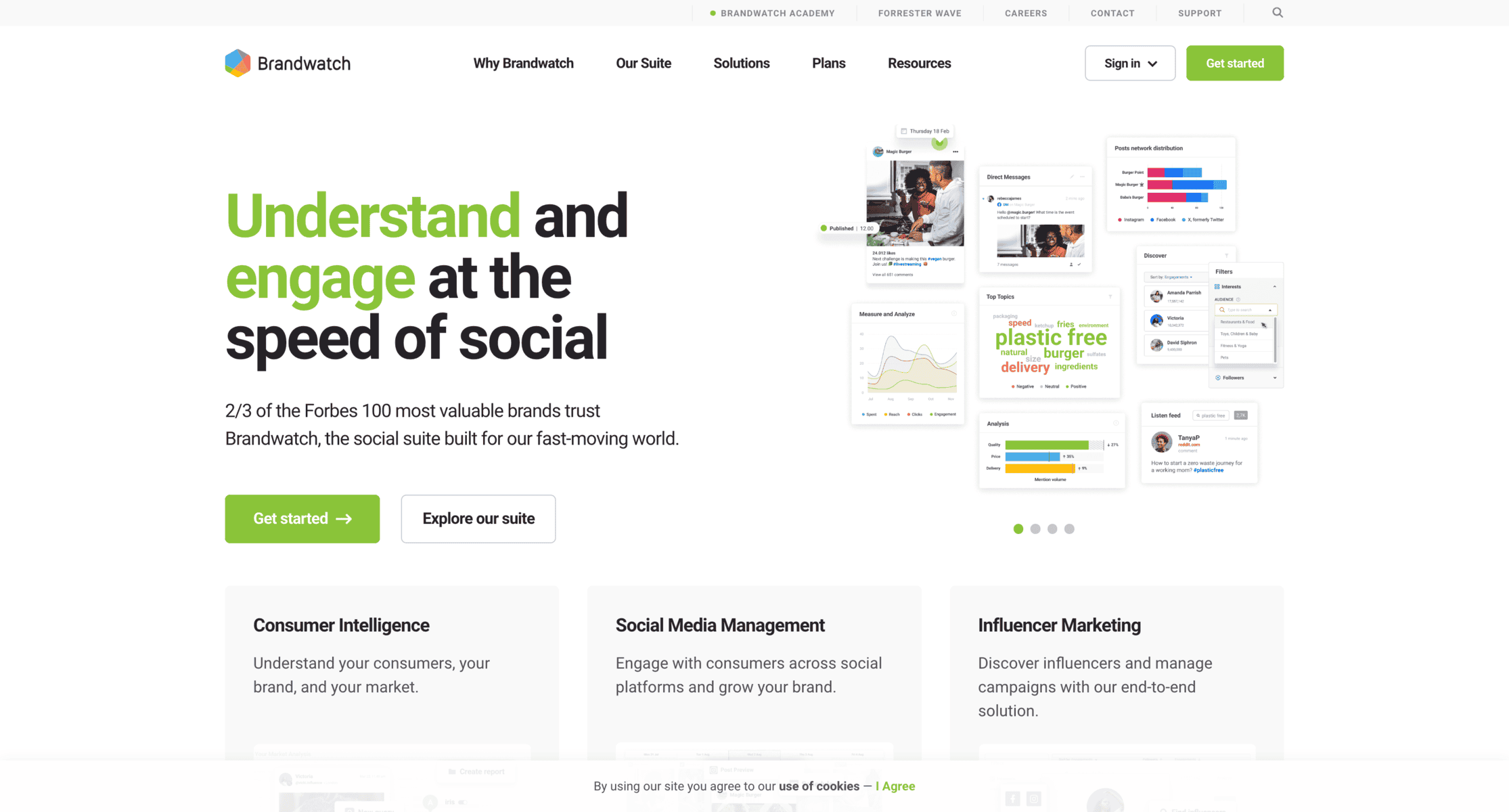
Brandwatch is an enterprise-level social listening platform with AI-powered sentiment analysis and deep analytics capabilities. It is widely used by global brands to track conversations across multiple channels and industries.
Key Features:
- AI-driven sentiment analysis to gauge public perception.
- Competitor benchmarking and trend forecasting.
- Multi-channel monitoring across social media, blogs, and forums.
- Custom dashboards and in-depth data visualization tools.
Best For: Large B2B enterprises that need advanced analytics and large-scale market monitoring.
Mention
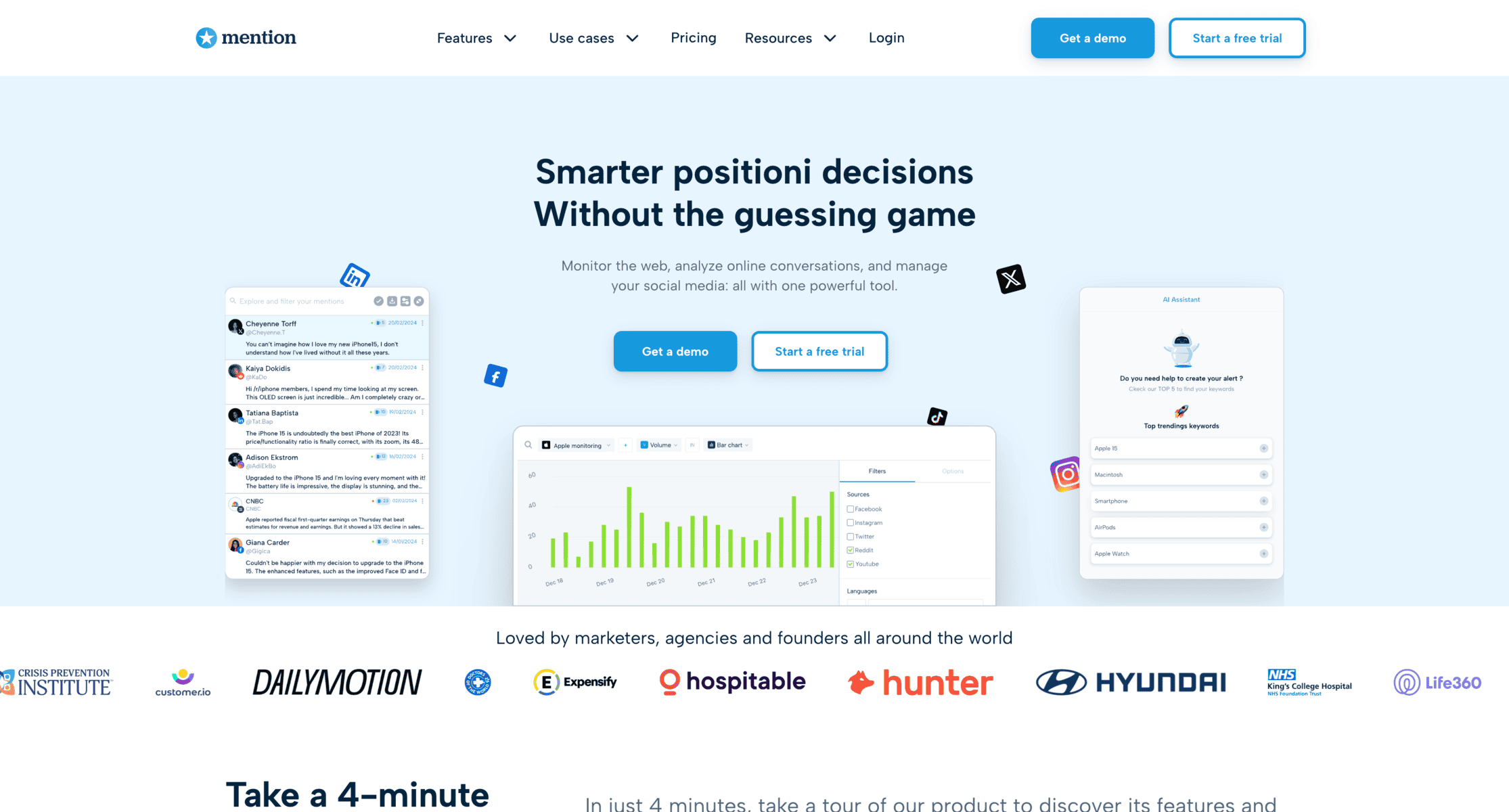
Mention is a cost-effective social listening tool for businesses looking for real-time alerts and keyword tracking. It provides businesses with insights into brand mentions, competitor activity, and customer sentiment.
Key Features:
- Real-time brand monitoring with instant alerts.
- Keyword tracking for industry and competitor analysis.
- Social media and web monitoring across multiple platforms.
- Custom reporting and analytics tools.
Best For: SMBs and growing B2B companies looking for an affordable and easy-to-use monitoring tool.
Hootsuite
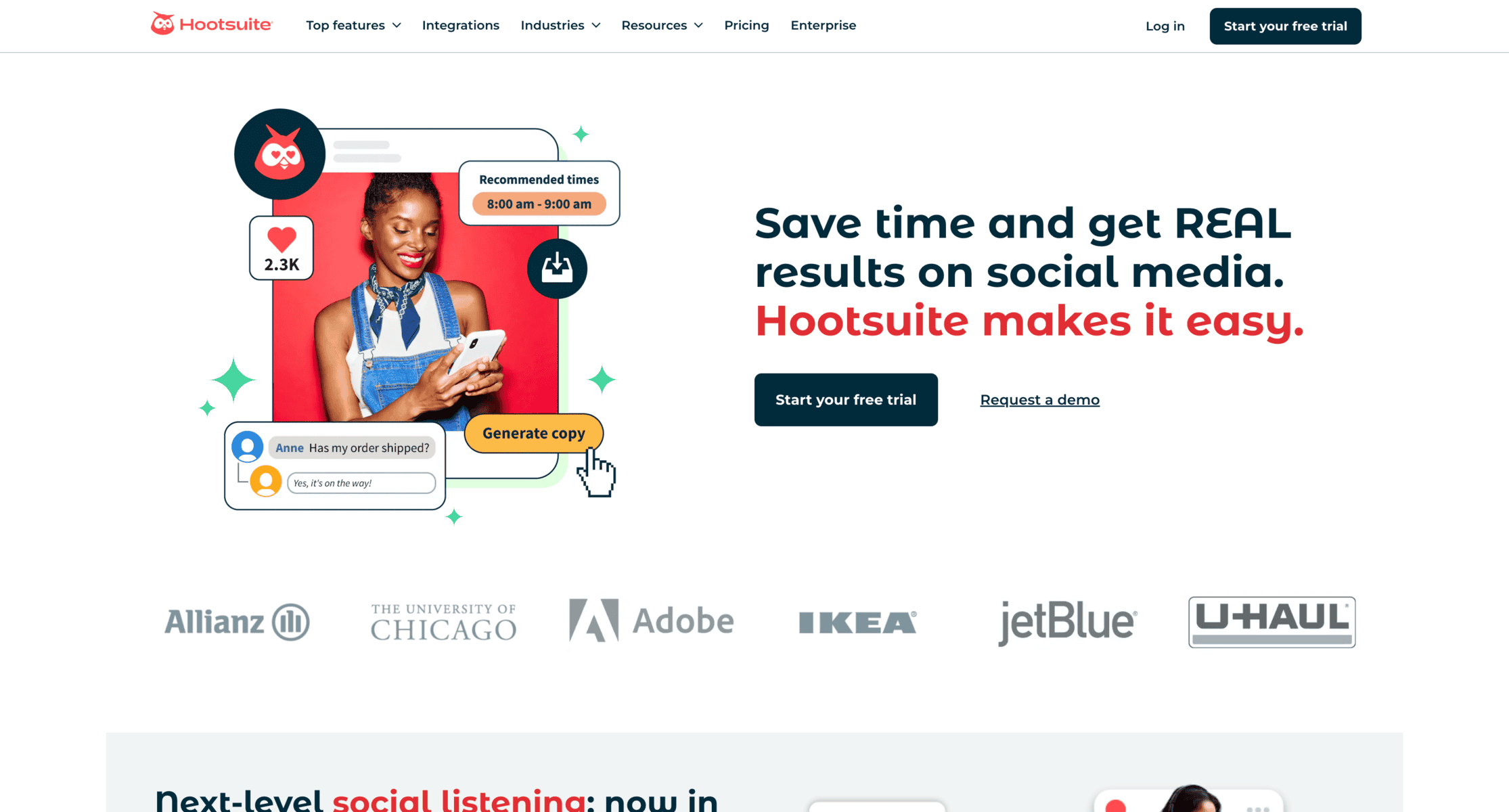
Hootsuite is primarily a social media management tool, but it also offers social listening capabilities. Businesses can track engagement, monitor conversations, and manage their social media strategy from a single platform.
Key Features:
- Social media listening and engagement tracking.
- Competitor analysis with engagement benchmarking.
- Scheduled posting and campaign management.
- Social reporting and performance tracking.
Best For: Businesses that want an all-in-one social media management and listening tool.
Agorapulse
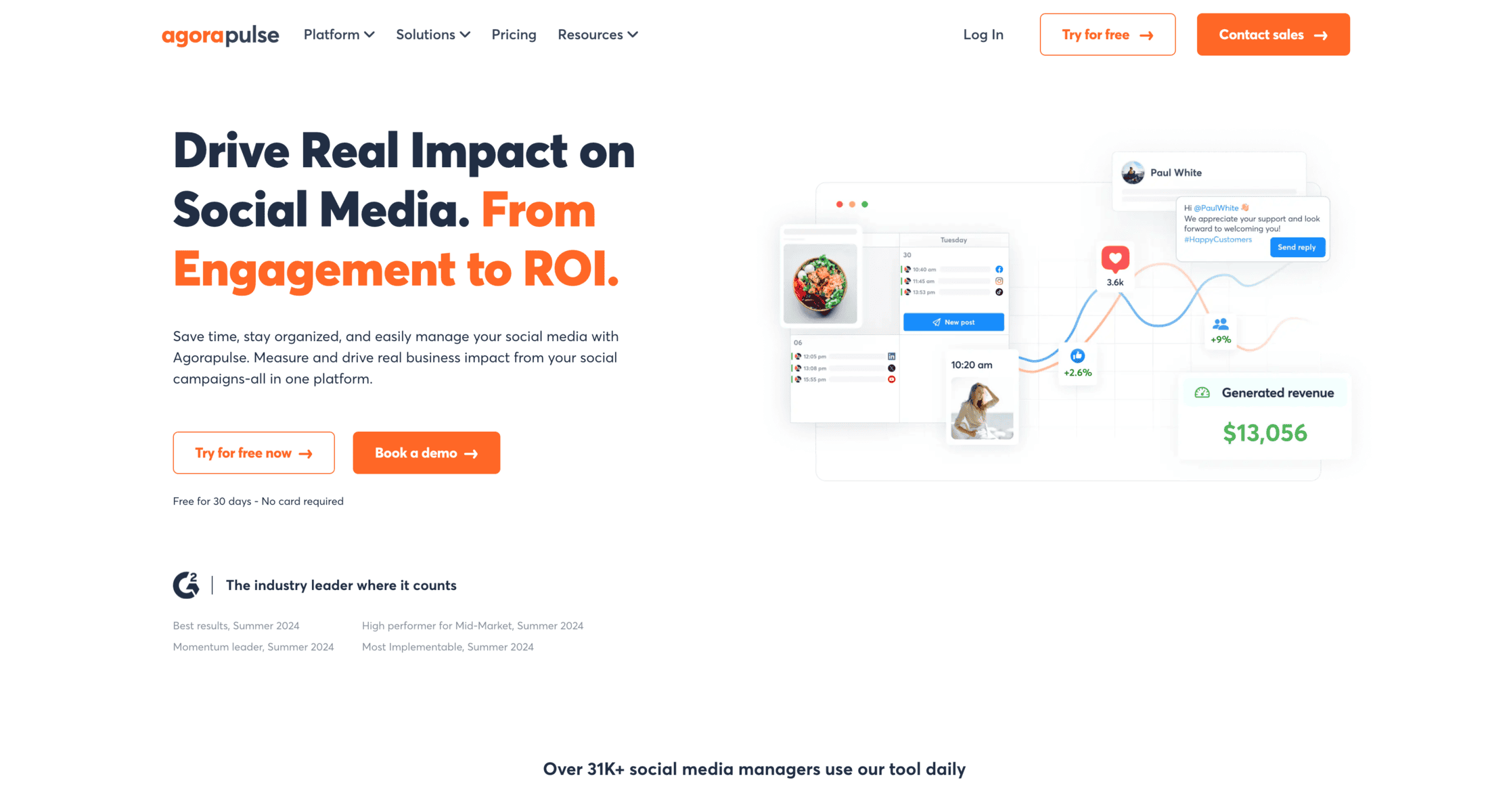
Agorapulse is a social listening and engagement platform that helps businesses track conversations, monitor competitors, and measure audience sentiment. It offers strong reporting and team collaboration features.
Key Features:
- Social media monitoring and audience sentiment tracking.
- Competitor analysis with engagement metrics.
- Automated reporting and performance tracking.
- Centralized inbox for managing customer interactions.
Best For: B2B brands looking for a user-friendly social listening tool with strong reporting features.
Features to Look for in B2B Social Listening Tools
When evaluating social listening tools, businesses should prioritize features that align with their specific needs.
Advanced Filtering for Niche Markets
B2B industries often require precision filtering to track relevant conversations. Look for tools that:
- Allow businesses to filter conversations based on industry, region, or job title.
- Exclude irrelevant data to focus on highly targeted discussions.
- Provide custom keyword tracking for specific B2B topics and competitors.
Sentiment Analysis and AI-Driven Insights
Understanding how people feel about a brand, competitor, or industry topic is essential. Tools should:
- Use AI-powered sentiment analysis to detect tone and emotions in discussions.
- Identify shifts in sentiment trends over time.
- Provide automated recommendations based on data insights.
Audience Segmentation and Decision-Maker Identification
B2B buying decisions involve multiple stakeholders. Tools should:
- Identify key decision-makers and influencers in industry conversations.
- Segment audiences based on job roles, industries, and engagement levels.
- Provide insights into customer intent based on discussion patterns.
Shareable Reports and Integration with CRM Tools
Social listening is most effective when insights are easily accessible across teams. Look for tools that:
- Offer customizable reports with data visualization.
- Integrate with CRM and marketing automation platforms (HubSpot, Salesforce, etc.).
- Allow for team collaboration, so sales, marketing, and customer support teams can act on insights.
The Future of B2B Social Listening
Social listening is evolving beyond just tracking mentions and analyzing sentiment. As technology advances, businesses will gain even deeper insights into industry trends, customer behavior, and competitor strategies. Here are three key developments shaping the future of B2B social listening.
AI and Machine Learning in Social Listening
Artificial intelligence (AI) is transforming social listening by automating data collection, analysis, and insight generation. Instead of relying on manual tracking, businesses can leverage AI-powered tools to:
- Detect emerging trends before they go mainstream.
- Improve sentiment analysis accuracy using natural language processing (NLP).
- Predict customer pain points and engagement patterns based on historical data.
AI-driven tools like Brandwatch and Mention are already using machine learning to refine insights, making social listening faster, more scalable, and predictive rather than reactive.
Predictive Analytics for B2B Trends
Rather than just analyzing past and present conversations, predictive analytics allows businesses to forecast industry shifts. This helps companies:
- Identify upcoming market disruptions based on industry discussions.
- Track early-stage competitor moves before they become major threats.
- Anticipate customer needs and tailor marketing campaigns proactively.
As predictive analytics becomes more advanced, B2B companies will rely on social listening tools not just for monitoring conversations but also for strategic planning and forecasting.
The Growing Importance of LinkedIn and Dark Social
While public social media platforms are useful, many B2B discussions happen in private channels—often referred to as “dark social.” These include:
- LinkedIn DMs and Private Groups – Where professionals discuss solutions away from public feeds.
- Slack Communities – Where niche B2B industries hold real-time conversations.
- Email Newsletters and WhatsApp Groups – Where industry experts share insights that don’t appear on traditional social platforms.
Future social listening tools will need to bridge the gap between publicly available data and these private, high-value discussions by leveraging behavioral insights, referral tracking, and engagement analysis.
B2B Social Listening Challenges
Despite its benefits, B2B social listening comes with unique challenges.
1. Navigating Niche Conversations
B2C brands deal with broad audiences, but B2B companies must track highly specific discussions. These conversations often occur in closed LinkedIn groups, private Slack communities, or gated industry forums, making them harder to access.
Solution: Use specialized tools that track industry-specific keywords and participate in relevant communities to stay in the loop.
2. Lengthy Sales Cycles & Complex Buying Processes
B2B purchasing decisions involve multiple stakeholders and longer deliberation times. Unlike impulse B2C purchases, social listening insights need to be nurtured over time.
Solution: Implement long-term tracking to monitor decision-making patterns and adapt messaging accordingly.
3. Reputation Management in B2B Spaces
One negative LinkedIn post from a dissatisfied client can impact credibility among an entire industry segment. Unlike B2C, where complaints often get lost in a flood of social content, B2B grievances hold weight.
Solution: Proactively monitor sentiment trends and engage in discussions before issues escalate.
4. Data Overload & Filtering Relevant Insights
Not every mention or discussion is relevant. Sorting through massive data volumes to extract meaningful insights is a major challenge.
Solution: Use AI-powered social listening tools that categorize data based on sentiment, industry relevance, and potential business impact.
Frequently Asked Questions (FAQ)
How does B2B social listening help in lead generation?
B2B social listening helps identify potential customers discussing relevant topics online. By tracking industry-specific conversations and buyer pain points, businesses can engage leads before they even start searching for vendors. For example, a CRM software company might find LinkedIn discussions about inefficient sales pipelines and proactively offer solutions.
What is the best platform for B2B social listening?
The best platform depends on your objectives:
- Brandwatch – Best for enterprise-level sentiment analysis and competitor benchmarking.
- Mention – Ideal for real-time alerts and keyword tracking.
- Hootsuite – Great for social media management and listening combined.
- Agorapulse – Best for engagement tracking and reporting.
For competitor tracking, Competitors App helps businesses monitor digital marketing strategies across SEO, ads, and content.
How can B2B companies measure the ROI of social listening?
Measuring ROI depends on tracking key performance indicators (KPIs) such as:
- Lead Generation – Number of new leads identified through social listening.
- Brand Sentiment Improvement – Changes in positive vs. negative mentions over time.
- Competitive Intelligence Effectiveness – How insights influenced marketing and sales decisions.
- Customer Engagement Levels – Increased responses and interactions from monitoring discussions.
Businesses should assess how social listening insights directly impact conversions, reputation, and decision-making.
What is the difference between social listening and social monitoring?
Social monitoring and social listening are often used interchangeably, but they serve different purposes.
Social monitoring is about tracking direct mentions, comments, and engagement related to a brand. It’s more reactive, helping businesses respond to customer feedback, reviews, and brand discussions in real time. For example, if a customer posts a complaint on LinkedIn, social monitoring ensures that a brand sees and responds to it quickly.
Social listening takes a broader approach by analyzing trends, sentiment, and competitor strategies. It’s proactive, helping businesses understand why conversations are happening and how to adapt. Rather than just responding to complaints, social listening identifies recurring frustrations in the industry, allowing companies to refine their messaging and improve products before issues escalate.
While social monitoring focuses on immediate responsiveness, social listening helps shape long-term marketing, sales, and brand positioning strategies. Both are essential, but social listening provides deeper insights that drive strategic decision-making.
